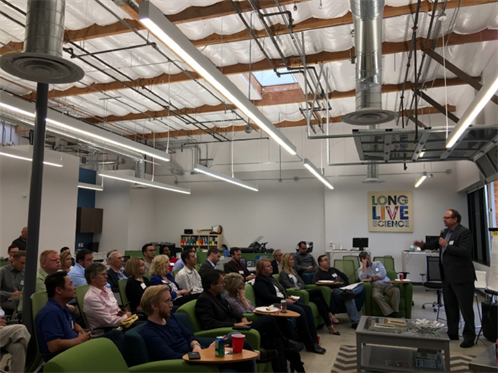The San Diego Biotech Consortium is a regional partnership of service companies dedicated to promoting best practices in product development for the Biotech industry. The Consortium offers leaders of biotech and life sciences companies a resource for tapping into best-in-class technologies and expertise in product, instrument, and cartridge design from concept through manufacturing. Each Consortium member is a sought-after specialist in their field, and the formal collaboration offers ease of selection for Biotech firms needing a fully integrated solution or a-la-carte services to augment or add capacity to their team.
The concept of a consortium evolved from an unmet need in the San Diego community. While there are numerous incubators and accelerators in this city, we found that the vast majority of the local member-driven organizations either focus on targeting a broad group of startups across multiple verticals or are serving a low-specialty area. The Consortium focuses on biotech, with a specific emphasis on instrumentation development.

The event invitation for May 25, 2017.
- Learn about the product development process
- Bridge the gap between prototype and larger scale development
- Learn the instrument development process
- How to bind the best combination of development partners?
- Best practices between marketing (market requirements) and engineering (spec development)
- Potholes in thinking of moving from prototyping to manufacturing, especially from the perspective of microfluidics
- First, John Zeis, president of Toolbox Medical discussed the unique challenges associated with cassette and cartridge development.
- Next, Steve Mott, co-founder of Simplexity Product Development dove into how collaborative product development helps lower risk and decrease time to market.
- Finally, Jorg Lorscheider senior business development manager at Paramit Corporation explained how to achieve unparalleled quality in contract manufacturing of complex biotech instrumentation.

Panel Participants (left to right): Erik Clausen, moderator (CG Life), John Zeis (Toolbox Medical), Steve Mott (Simplexity Product Development), Jorg Lorscheider (Paramit Corporation).

An engaged audience.
After the presentations, any audience questions identified at the beginning that had not yet been answered were addressed. The panel naturally evolved into a collaborative discussion between the audience and panel members. The discussion focused on sharing strategic insights, methods, and perspectives around critical steps in taking life science products from concept to production.

The moderators: Raj Oswal (Simplexity Product Development) & Erik clausen (CG Life).
While the formal part of the event concluded around 8 p.m., networking continued past 10:30 p.m., with a very engaged audience mingling late into the night — indicating a successful event.

Future partnerships and events


